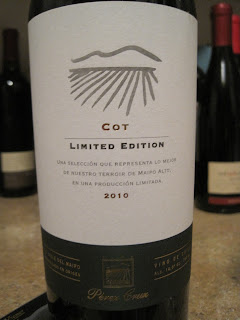 |
| (img src: http://winebloggersconference.org/america/) |
Back in 2010, I attended the WBC in Walla Walla and was fortunate to have several great bloggers to help me along. Wide-eyed and fresh-faced (well maybe not so much the latter), it was my first time to Washington's wine country, first time meeting so many other bloggers, first time at a conference like that, and first time representing myself as a brand, not just a person. Quite a lot of firsts, no?
The following list is going to meander somewhat, as I list various things I think will help attendees get the most out of Portland's turn at the Wine Blogger's Conference. In the comments section below, please feel free to add in any more tips for attendees.
1. Talk to everyone! - Be social! Remember how social media is an integral part of blogging? It carries over into real life. Have conversations, ask questions, make connections! You'll make lifelong friends and valuable connections.
2. Bring lots of business cards - Seriously I cannot emphasize this enough. Business cards are still vital to getting your brand out there in front of people. Use Moo Cards if you want to be unique. Pack hundreds and watch them disappear! I still have a huge stack from 2010's Conference that I refer to almost weekly.
3. Pack your camera - Whether to record the landscape, conference activities, bottles of wine, or anything else, a camera is truly better than your iPhone or Blackberry. Trust me on this.
4. Do your research - Learn about who you'll be visiting and what wines they produce. Research Portland's vibrant food and wine scene. Read about the history of the Oregon wine industry. Time spent on research will make this experience so much better.
5. Pre-plan! Pre-plan! Pre-plan! - Some things can't be planned, like off-conference pop-up parties. Other things can be and should be planned. Dinner with a group of blogger friends? Plan it. A winery visit? Plan it. What break-out sessions you want to attend? Plan it.
6. SPIT! - Don't be afraid to spit. You'll be around many wine professionals, and there's a reason we spit. Sure it's not the most glamorous or graceful thing, but you will be in front of hundreds of wines (and hundreds of fellow bloggers) so learning how to spit (practice at home with water) will make you look professional and classy. Getting sloppy drunk and passing out in the lobby will do the opposite and it'll harm your brand.
7. Get some rest (on Wednesday and Thursday) - The pace of the WBC is always pretty quick, especially if you're networking and going to outside activities, tastings, and parties. Wednesday and Thursday are good nights to get at least a decent eight hours of sleep if at all possible. Friday and Saturday are marathon days, but they're amazing.
8. Don't forget to eat - Food absorbs alcohol, keeps your energy levels up, keeps you healthy, and tastes damn good! I cannot emphasize enough the importance of exploring the food scene in Portland. From food carts to amazing restaurants like Noisette or Andina, EAT while you're here!
9. Use Twitter/Facebook/Instagram/Tumblr - Be social, document your experience! Use hashtags, including #WBC12 to get that tweet in front of everyone else using Twitter at the Conference. Take pictures of wineries, wines, people, parties, food, anything you want. Share with your attendees! Follow new people, add them on Facebook too!
10. Don't feel the need to blog DURING the conference - I noticed a lot of people trying to blog during Walla Walla's WBC and last year in Virginia, but the quality of most blog posts was lacking. Composing a thoughtful, coherent blog post takes time and focus, so instead of trying to find time and focus during a crazy-awesome four day event, take a lot of notes and compose those posts AFTER the conference.
11. Don't wear perfume/cologne/Old Spice/Axe/etc!! - My friend Pamela over at Enobytes Wine Blog pointed this one out and it couldn't be more true. Non-scented deodorant or ant-perspirant is fine, and we encourage that because no one wants to smell body odor. The problem is (and I experienced this at WBC 10) people who think it's ok to wear any kind of smelly perfume or cologne (men are equally guilty!) when a room full of people want to taste wine. DON'T DO IT!
As you can see, this is a list merely from one blogger's perspective. Call it a distillation of thought based upon both experiencing and observing conferences. It's entirely incomplete and biased towards certain points of view but I hope you find a few nuggets of valuable information to help you get the most out of this year's Wine Bloggers Conference.
Don't forget to find me and say hi!
Beau Carufel












